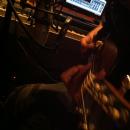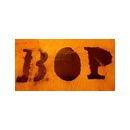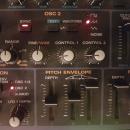Recibi este email el 15
Dear Alfredo Forte,
As always in mid January the NAMM Show is being held in Los Angeles. This is where this year we will be demonstrating the first Melodyne with Direct Note Access, our revolutionary new audio editing technology. Melodyne editor offers all the perfected, tried-and-tested audio editing functions with which you are already familiar from Melodyne. Through the integration of DNA, however, even the harmonies in an audio file can now be seen, accessed and reshaped—note by note.
Originally we were going to call it “Melodyne plugin 2”. But since we have in effect developed an entirely new product around DNA, with new technology and completely new fields of application, and one, what’s more, that can also run in stand-alone mode, we decided to give it a new name: Melodyne editor.
You will find further information about Melodyne editor and our new DNA technology at our website: http://www.celemony.com.
Kindest regards,
All at Celemony
Our official press releases for your information:
Celemony presents Melodyne editor with DNA Direct Note Access
Celemony Software GmbH is presenting at the NAMM Show 2009 Melodyne editor, the first product with Direct Note Access. DNA technology was first introduced at the Musikmesse Frankfurt 2008 and has aroused great interest worldwide. It allows for the first time to edit individual chord tones in audio recordings. Melodyne editor offers for single audio tracks all the possibilities that have made Melodyne legendary, and, with DNA, opens up in addition to these unique new possibilities for the correction and refashioning of audio material. Melodyne editor can run as a plug-in or stand-alone and will be available from spring 2009 onwards for 349 US$/€.
Melodyne has for years been very highly regarded as a particularly musical audio software application delivering exceptional sound quality. Its unmatched ability to recognize and edit the pitch, timing and various other parameters of notes contained in audio material have elevated Melodyne worldwide to the status of an indispensable tool for music production—especially for the editing of vocals. With the development of the cutting-edge DNA technology and its introduction in Melodyne editor, Celemony is now opening the door to totally new applications. At the same time, Celemony is underlining the singularity of its multi-award-winning Melodyne software.
Melodyne editor represents both functionally and technically the next Melodyne generation. It brings all the perfected, tried-and-tested editing functions made famous by the existing editions of Melodyne and is therefore outstandingly well suited to the editing of vocals and other monophonic instruments. With the integration of DNA, however, even the harmonies in an audio file can now be seen, accessed and shaped—note by note. Users can quite literally intervene in the chords of their recordings and change individual notes within them. This offers sensational new possibilities for the correction and refashioning of audio.
Melodyne editor is designed for the editing of individual instrumental recordings such as vocals, guitar, saxophone or piano, but good results can also be obtained with more complex material such as string quartets. If two instruments sound the same note at the same time, Melodyne editor offers one note for editing. The user can alter the pitch, position and duration of the note detected, make it louder or quieter, copy or cut it and paste it in some other position, and so on. Adjustments can also be made to the formant register, vibrato and drift of the notes as well as any pitch, volume or formant transitions. Special copying functions also allow the transfer of selected attributes from one note to another.
Whilst in terms of intuitive access, musicality and sound quality Melodyne editor is in the finest Celemony tradition, its technical foundations are completely new. The new software base offers among other things optimized multi-threading that fully exploits the advantages of modern multicore processors. In addition, it allows many improvements in plug-in operation including freely selectable window size, the monitoring of pitch editing, scrubbing, and ‘Edit Play’ (playback not tied to the host).
“Our first product with DNA was intended to be an update to Melodyne plugin 2. Since, however, we have ended up developing a new product around DNA, with new technology and fully new application possibilities, and one that furthermore can also be used as a stand-alone application, we decided to give it a new name. Melodyne editor sums it up nicely: a Melodyne editing environment for individual tracks,” says Carsten Gehle, Technical Director of Celemony Software GmbH.
When it appears in the spring of 2009, Melodyne editor will replace Melodyne plugin and be available for 349 US$/€ from the Celemony web shop as well as from music dealers. In addition, Melodyne editor when released will also form part of the Melodyne studio bundle. Naturally, even after the name change, the update options already announced for existing users of Melodyne plugin will still be valid: the switch to Melodyne editor will cost 129 US$/€, and anyone who registered Melodyne plugin after the 12th March 2008 will even receive Melodyne editor free of charge.
Dear Alfredo Forte,
As always in mid January the NAMM Show is being held in Los Angeles. This is where this year we will be demonstrating the first Melodyne with Direct Note Access, our revolutionary new audio editing technology. Melodyne editor offers all the perfected, tried-and-tested audio editing functions with which you are already familiar from Melodyne. Through the integration of DNA, however, even the harmonies in an audio file can now be seen, accessed and reshaped—note by note.
Originally we were going to call it “Melodyne plugin 2”. But since we have in effect developed an entirely new product around DNA, with new technology and completely new fields of application, and one, what’s more, that can also run in stand-alone mode, we decided to give it a new name: Melodyne editor.
You will find further information about Melodyne editor and our new DNA technology at our website: http://www.celemony.com.
Kindest regards,
All at Celemony
Our official press releases for your information:
Celemony presents Melodyne editor with DNA Direct Note Access
Celemony Software GmbH is presenting at the NAMM Show 2009 Melodyne editor, the first product with Direct Note Access. DNA technology was first introduced at the Musikmesse Frankfurt 2008 and has aroused great interest worldwide. It allows for the first time to edit individual chord tones in audio recordings. Melodyne editor offers for single audio tracks all the possibilities that have made Melodyne legendary, and, with DNA, opens up in addition to these unique new possibilities for the correction and refashioning of audio material. Melodyne editor can run as a plug-in or stand-alone and will be available from spring 2009 onwards for 349 US$/€.
Melodyne has for years been very highly regarded as a particularly musical audio software application delivering exceptional sound quality. Its unmatched ability to recognize and edit the pitch, timing and various other parameters of notes contained in audio material have elevated Melodyne worldwide to the status of an indispensable tool for music production—especially for the editing of vocals. With the development of the cutting-edge DNA technology and its introduction in Melodyne editor, Celemony is now opening the door to totally new applications. At the same time, Celemony is underlining the singularity of its multi-award-winning Melodyne software.
Melodyne editor represents both functionally and technically the next Melodyne generation. It brings all the perfected, tried-and-tested editing functions made famous by the existing editions of Melodyne and is therefore outstandingly well suited to the editing of vocals and other monophonic instruments. With the integration of DNA, however, even the harmonies in an audio file can now be seen, accessed and shaped—note by note. Users can quite literally intervene in the chords of their recordings and change individual notes within them. This offers sensational new possibilities for the correction and refashioning of audio.
Melodyne editor is designed for the editing of individual instrumental recordings such as vocals, guitar, saxophone or piano, but good results can also be obtained with more complex material such as string quartets. If two instruments sound the same note at the same time, Melodyne editor offers one note for editing. The user can alter the pitch, position and duration of the note detected, make it louder or quieter, copy or cut it and paste it in some other position, and so on. Adjustments can also be made to the formant register, vibrato and drift of the notes as well as any pitch, volume or formant transitions. Special copying functions also allow the transfer of selected attributes from one note to another.
Whilst in terms of intuitive access, musicality and sound quality Melodyne editor is in the finest Celemony tradition, its technical foundations are completely new. The new software base offers among other things optimized multi-threading that fully exploits the advantages of modern multicore processors. In addition, it allows many improvements in plug-in operation including freely selectable window size, the monitoring of pitch editing, scrubbing, and ‘Edit Play’ (playback not tied to the host).
“Our first product with DNA was intended to be an update to Melodyne plugin 2. Since, however, we have ended up developing a new product around DNA, with new technology and fully new application possibilities, and one that furthermore can also be used as a stand-alone application, we decided to give it a new name. Melodyne editor sums it up nicely: a Melodyne editing environment for individual tracks,” says Carsten Gehle, Technical Director of Celemony Software GmbH.
When it appears in the spring of 2009, Melodyne editor will replace Melodyne plugin and be available for 349 US$/€ from the Celemony web shop as well as from music dealers. In addition, Melodyne editor when released will also form part of the Melodyne studio bundle. Naturally, even after the name change, the update options already announced for existing users of Melodyne plugin will still be valid: the switch to Melodyne editor will cost 129 US$/€, and anyone who registered Melodyne plugin after the 12th March 2008 will even receive Melodyne editor free of charge.













